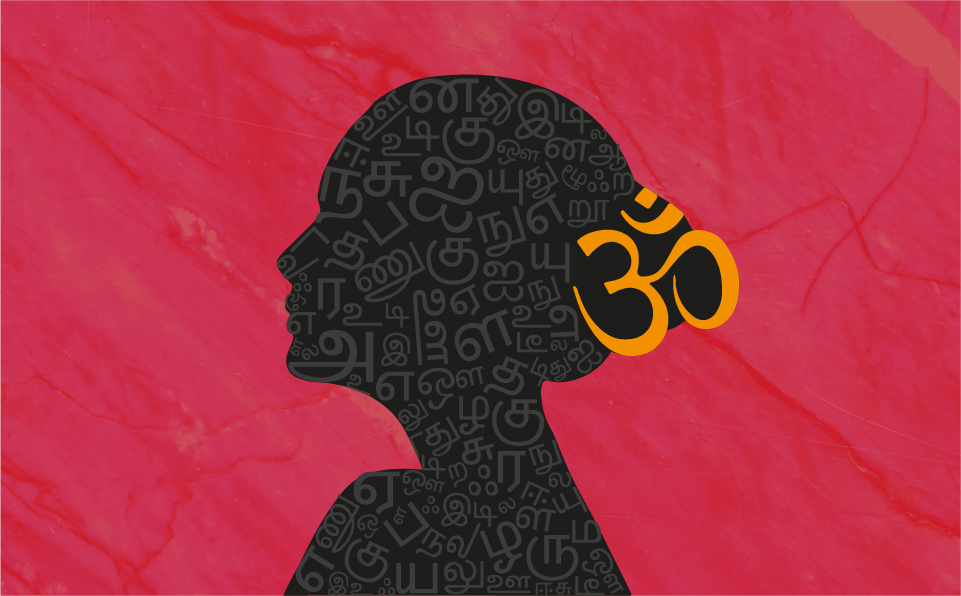
TN govt denounced over 'brahminical' statue for Mother Tamil in marble

A controversy has broken out in Tamil Nadu over the recent announcement of the Tamil Nadu government’s guidelines for installing a statue of ‘Tamil Annai’, personifying Tamil language as a mother. Recently, the government sought expression of interest from bidders and the bid document included an outline of the early history of Tamils. The write-up describes the Sangam period from 300 BC to 200 AD during which, “Hinduism, including Vedic Brahminism” was a popular religion among the people. While many historians and Dravidianists dispute that Vedic Brahminism was a popular religion during that period what has riled them more is that the bid document says the writeup on Sangam period should “facilitate coherence of the bidder for the project.”
This has stirred a hornet’s nest with Tamil scholars and Tamil nationalists raising questions over linking of the language with caste and religion, specifically to Hinduism and Vedic Brahminism. Tamils consider their language as the mother of all Dravidian languages. The deification of the language in the persona of mother took root during the Tamil renaissance movement. Besides, Tamil language has always played a pivotal role in Dravidian polity.
Back in the spotlight
Former Chief Minister M K Karunanidhi sanctioned the first temple for Tamil Annai in 1975. Following this, a temple was conceived and designed by Saminatha Ganesan, a Tamil scholar, and was sculpted by Ganapathy Sthapathi. It was inaugurated in January 1981, on the occasion of World Tamil Conference, at Thamukkam ground in Madurai by actor-turned politician M G Ramachandran, who by then had taken over as the Chief Minister of the state.
When J Jayalalithaa was the Chief Minister of Tamil Nadu in 2013, she announced the creation of a statue for Tamil Annai — costing ₹100 crore — on the lines of the Statue of Liberty in New York. This was to be set up in the middle of Vaigai river in Madurai. At that time, there was no mention of rules that insisted on Vedic period or Hindu culture.
For the past six years, the statue had been relegated to the back burner. However, the current announcement, with its controversial stipulations, has angered both Tamil nationalists and scholars. The announcement comes close on the heels of historian R Nagaswamy’s claim that the Thirukkural (classic Tamil text in the form of 1330 couplets) is an abridgement of the Vedas. Dravidian politicians and scholars believe that Nagaswamy’s utterances and his recent works strike at the very heart of Dravidianism, which is that Tamils had a non-Vedic Hindu past, during which their lives were fairly irreligious, non-Sanskritic and even casteless.
Also read: Why is this 88-year-old historian riling Stalin and other Dravidianists
“Against Tamil culture”
Dravidianists say the concept of Mother Tamil is secular and see the volte face as a direct outcome of the AIADMK government’s close proximity to the BJP-ruled central government, and an unabashed attempt to brahmanise Tamil culture. “The Hindutva forces who have infiltrated the state have the Edappadi government in the grip and destroying Tamil Nadu,” said Vaiko, leader of the Dravidian party MDMK.
Some sculptors and artists of the state are unhappy over the government tenders that seek usage of marble for construction of the statue. Sculptors in Tamil Nadu traditionally use basalt rock (karungal) or bronze to create statues. K Sundaramoorthy, secretary, Traditional Viswakarma Sthapathis and Sculptors Welfare Association, says the government’s move disrespects its own artists. Describing the government’s move as directed “against Tamil culture”, he said artists from Rajasthan are experts in creating marble sculptures and suspected that they would be called in to build the statue. “This means the state government has disowned its own artists and is importing artists from outside the state, thus deliberately belittling Dravidian art,” Sundaramoorthy said.
The Tamil Nadu government runs a sculpting college in Mamallapuram near Chennai. Every year, around 40 to 50 sculptors pass out of the institution after getting trained under experienced sthapathis. “The government could have given an opportunity to such sculptors and sthapathis,” instead of importing from outside,” added Sundaramoorthy.
Roman parallels
Poompuhar or the Tamil Nadu Handicrafts Development Corporation owns a stone factory in Mamallapuram. Experts say the state could have sourced material from there to build the Tamil Annai statue. The new announcement also specifies that the statue should be in the line of ‘Fontana di Trevi’ (Trevi Fountain) in Rome. “If sculptors from North India create a statue on the basis of specifications given by the government it would look like a Greek model,” says Rajan, a Chennai-based independent sculptor. Besides, the sculptors from the north may not have the expertise to create a Tamil or Dravidian face. The statue might end up with lots of jewellery and opulent clothing. In the ultimate analysis the statue would represent Aryan race. Why can’t our artists create our own statue using karungal?” he said.
“Materials like fibre, marble and glass have a very short life. They cannot withstand the temperature and weather conditions of the state,” added Rajan.
The Tamil Nadu Handicrafts Corporation officials were unavailable for comment.
(This article has been revised to be more faithful to the exact words in the Request For Proposal for the design, execution and installation of the sculptures)

